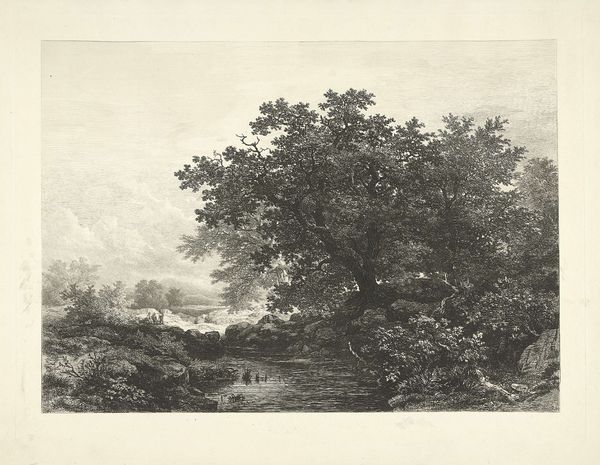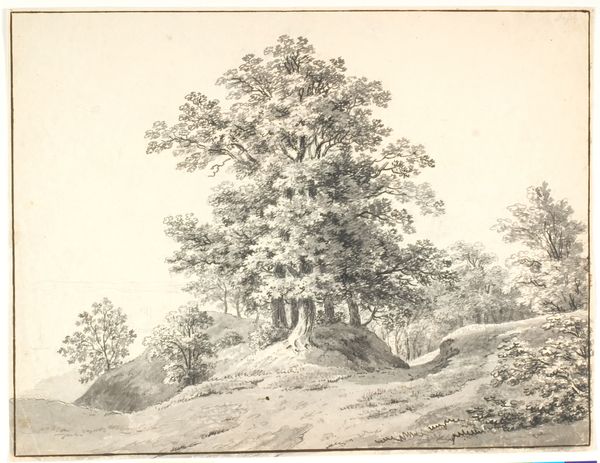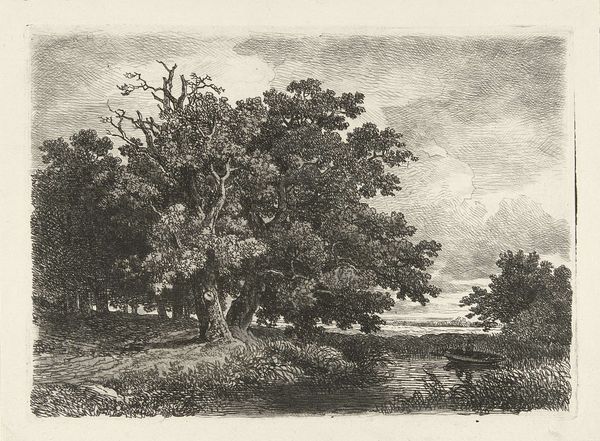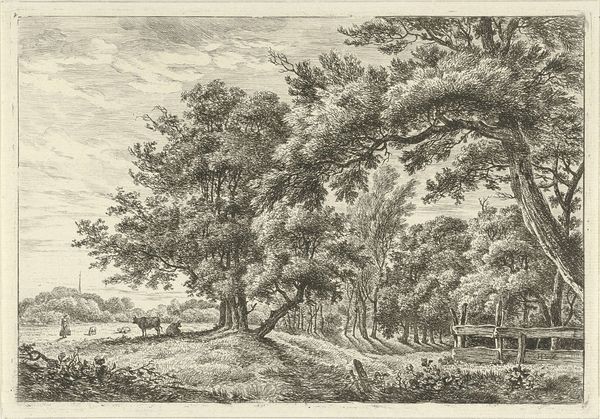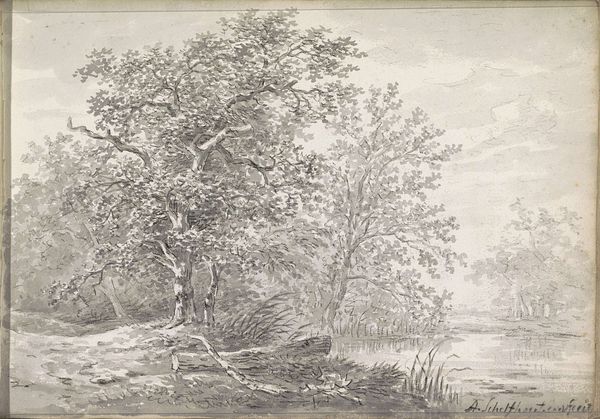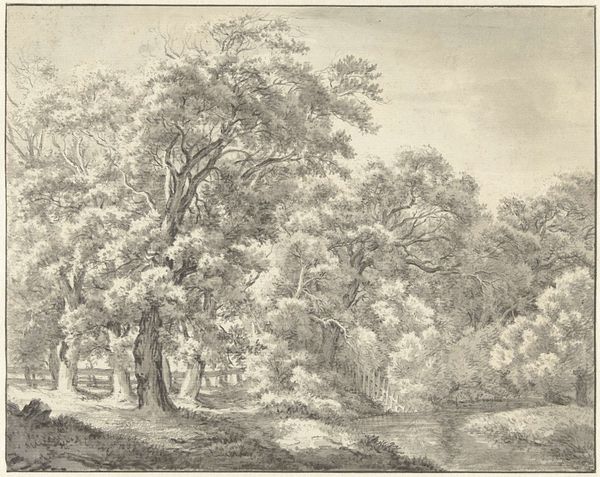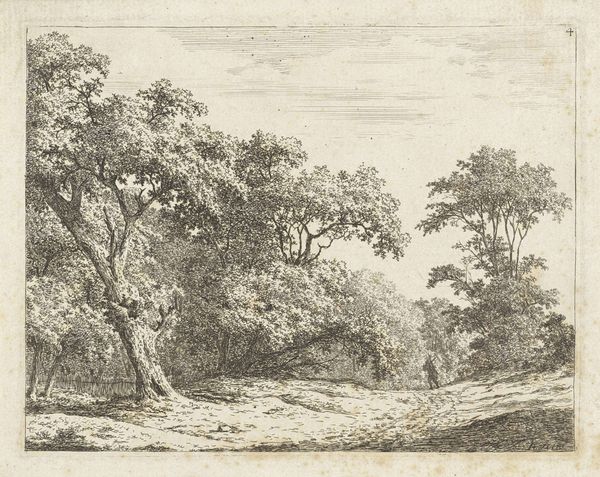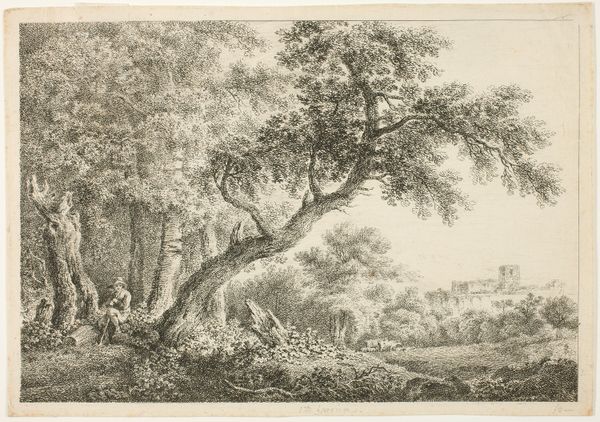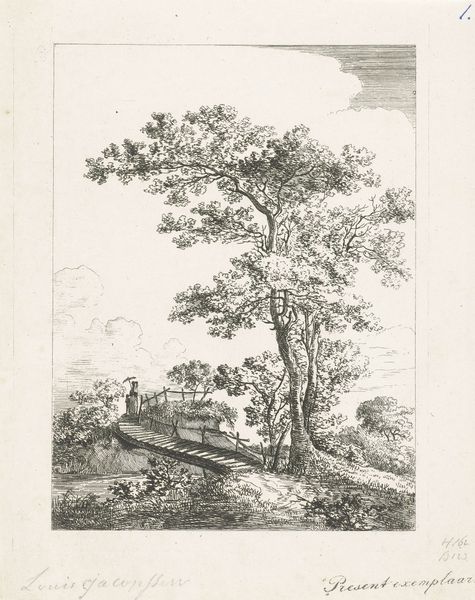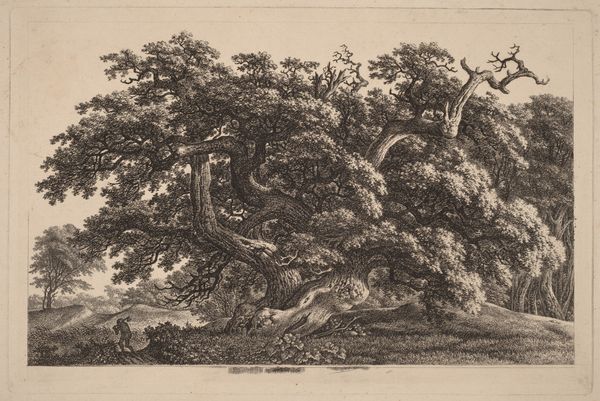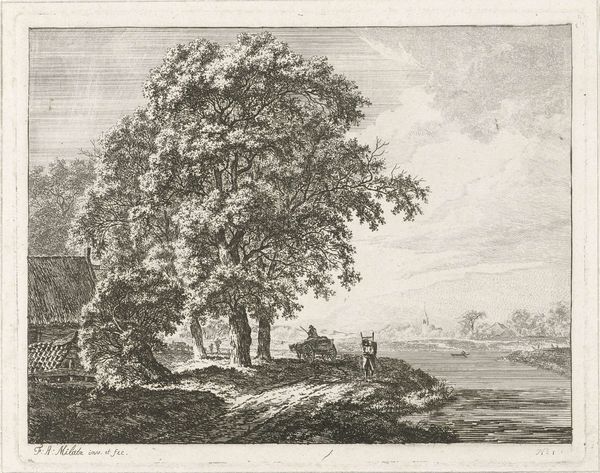
drawing, print, etching, paper
#
drawing
# print
#
etching
#
landscape
#
paper
#
romanticism
Dimensions: 304 × 415 mm (plate); 341 × 460 mm (sheet)
Copyright: Public Domain
Curator: Let’s spend a moment with "Fisherman in Wooded Landscape," an etching by Carl Wilhelm Kolbe, created sometime in the 18th or 19th century. Editor: I'm immediately struck by its hushed quality. The scene is peaceful, even… melancholy? There's something about the fisherman's solitude. Curator: Absolutely. Kolbe was deeply influenced by the Romantic movement. His focus on the solitary figure within an overwhelming, idealized nature reflects core Romantic ideals about the insignificance of humanity within the face of such a vast landscape. Editor: He certainly captures the imposing power of nature here. The trees loom so large; they dwarf the tiny figure. I imagine etching that detail must've been laborious! Look at all the work in rendering the leaves. Curator: Kolbe was renowned for his precise and meticulous etching technique. His style perfectly conveyed a popular understanding during the period, with its taste for idyllic pastorals set against dark, expressive natural backdrops. Such works were often displayed in print rooms in country estates, enjoyed in quiet contemplation, rather than large exhibitionary displays. Editor: I'm guessing that would appeal to a certain collector or two... But this also feels intensely personal to the artist too; do you get a sense that this work provided him some sort of comfort or even catharsis? The composition itself almost feels therapeutic in its careful balance between light and shadow. Curator: Certainly. The print provided both Kolbe himself and a viewing public a retreat into the landscape, something separate from modernity and even society itself. As print media circulated within the middle and upper classes, it provided an escape from social concerns as an independent form. Editor: That's lovely, the idea of a little printed escape hatch. Makes me appreciate this even more. I imagine this etching, though old, continues to resonate through viewers to this day. Curator: Indeed. It allows us to revisit the past, not only that of Carl Wilhelm Kolbe, but also ourselves and our historical present.
Comments
No comments
Be the first to comment and join the conversation on the ultimate creative platform.
